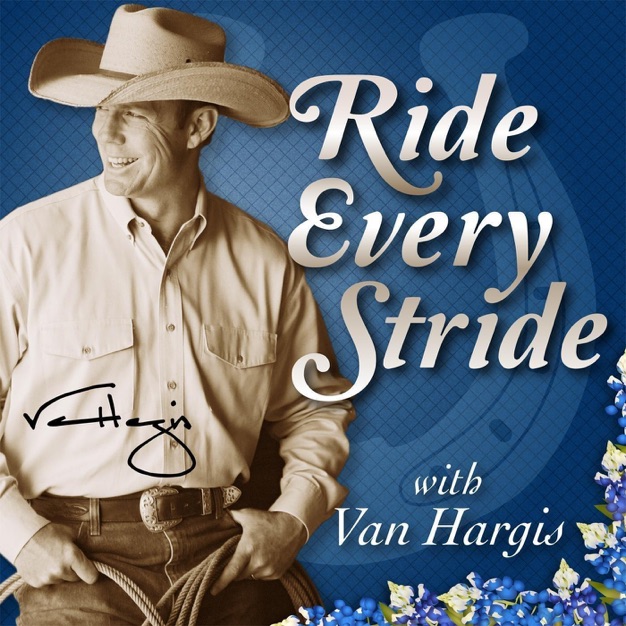
Ride Every Stride | Horsemanship and Personal Growth with Van Hargis
Van Hargis
Welcome to Ride Every Stride with Van Hargis, a podcast about horsemanship . . . and more. Our goal is to educate, motivate, inspire, and entertain you through an exploration of everything horsemanship and the intersection of horsemanship and humanship. We want to give you practical tools that you can use in the arena or on the trail and teach you the principles of great horsemanship, while also inspiring you to apply those same principles to help your personal growth and success.
- 32 minutes 54 secondsDance With Who Brung Ya
In today's episode I want to pay tribute to some very influential men and mentors.
Allen Gammill my grandfather. He taught me several lessons in loyalty.
Boley Crawford assistant football coach at East Texas State University(now Texas A&M Commerce) who gave me an option between class or practice
Dick Atwood owner of Atwood Hats
Randy Snodgrass owner of ArenaWerks
These men left a lasting impression on me!
17 July 2020, 7:31 pm - 49 minutes 29 secondsNothing Beyond the Basics; Stopping of Forward Motion
In the most recent previous episodes we discussed The Path of Least Resistance, Forward Motion, The Control of Forward Motion and now it's time to discuss The Stopping Forward Motion.
Let's face it. There are tons of ways to stop a horse. Heck, there are even different kinds of stops. The thing I focus on first is a true understanding between horse and rider as to WHY your horse is moving.
Today we will focus on what I refer to as The 3 Steps To Stopping.
First Quit making him go. Remove your movement/rhythm
Second WHOA
Third Support with your reins
As my horse develops, I may actually train them to stop by also using The 3 Steps to Stopping individually. I'll explain.
Bottom line is that we must ask ourselves why our horse is going. Our horse must learn from all previous steps of The Basics that they are moving because we've established a working relationship and we are creating rhythm to get the horse to move. When this working relationship is established and practiced first then The 3 Steps to Stopping will be a success.
2 July 2020, 6:31 am - Nothing Beyond the Basics; Control of Forward Motion-Directional & Speed (Part 4)
Last episode we continued a new series titled Nothing Beyond the Basics and spoke about forward motion and the control of forward motion as we talked about establishing aworking relationship by working on speed control.
Today we will focus on the control of forward movement by focusing on directional control.
Directional Control- left and right and turns. Turns or change of directions using turns. Inside turns and outside turns. I personally prefer outside turns initially. Why? Preparing for what comes next and having faith that what in my opinion too many focus on; hooking on or joining up or whatever term you want to put on it. Not that it’s not important it’s just not on my priority list in front of preparing for where I’m going to be, in the saddle. Eye to eye transitions better prepare a horse for a rider to be behind them. As I work on these things and the other important priorities the horse soon craves the hooking on... it just happens anyway. It’s not something I have to work on. I have faith it will come. I know it will come.
Next episode we will discuss more about speed control and preparing the horse for further success
20 May 2020, 7:13 am - Nothing Beyond the Basics; Control of Forward Motion-Directional & Speed (Part 3)
Today we will focus on the control of forward movement.
Directional Control- left and right and turns. Turns or change of directions using turns. Inside turns and outside turns. I personally prefer outside turns initially. Why? Preparing for what comes next and having faith that what in my opinion too many focus on.
Hooking on or joining up, or whatever term you want to put on it - Not that it’s not important it’s just not on my priority list in front of preparing for where I’m going to be, in the saddle. Eye to eye transitions. Better prepare a horse for a rider to be behind them. As I work on these things and the other important priorities the horse soon craves the hooking on… it just happens anyway. It’s not something I have to work on. I have faith it will come. I know it will come.
11 May 2020, 5:49 pm - Nothing Beyond the Basics; Forward Motion (Part 2)
Today as we progress on the forward motion and obtaining it via the path of least resistance I'd like to address the use of the round pen for a moment. I'm certainly not gonna dog any other credible tools such as no pen at all or a square pen, rectangular pen, or any other shape. Yes, a tool can assist greatly if you know what project you're working on and the purpose. What tool one uses might, just might, depend on one's experience and the exact purpose being attempted. Here we will discuss a bit about a Facebook post I interacted in regarding a guy bashing round pens in favor of square pens.
Forward motion; for the sake of discussion we are going to be referring to horses that make up the vast majority of horse's world wide and not necessarily gaited horse's. Please note that I have absolutely nothing against gaited breeds at all. Just for the sake of simplicity I'll refer a lot to a walk, trot, canter, and perhaps a gallop. In the beginning, on any horse at any training or trained level I ask them to go forward by offering the path of least resistance and I couldn't care less what gait they choose as long as they are going forward. Of course I'd like them to ease off at a walk, but as long as they are going forward then I know all the other things I desire from them wil come. I just want forward motion when I ask for it.
Next episode we will discuss control of forward motion
4 May 2020, 6:12 pm - Nothing Beyond the Basics; The Path of Least Resistance (Part 1)
Welcome back to Ride Every Stride. It's been quite a while since our last episode. Thank you all for your patience, continued encouragement and support.
You all may have noticed a change in the voice on the introduction piece. Well, let me formally introduce the new Ride Every Stride co-host, my lovely wife Melanie Hargis. For those of you that visit our website, join theTop Hand Club, or see us on the road at speaking engagements, clinics, or expo appearances chances are you may have already met Miss Melanie either directly or indirectly.
I'd also like to give a shot out to our former host, Miss Laura McClellan. She was a huge inspiration to me starting Ride Every Stride and I'll forever be grateful to her for all she's done to help me on countless projects, but most of all for being a great friend. We wish her continued success on her podcast The Productive Woman.
Today we are going to take a trip back... we are going to restart by focusing on a series... this series is going to take us back to THE one thing that has lead to most of my successes both in horseemanship and humanship; Nothing Beyond the Basics.
Nothing Beyond the Basics... a) the path of least resistance b) forward movement c) control of forward movement d) stopping of forward movement
Today; part one of this series: The Path of Least Resistance
27 April 2020, 9:06 pm - Herd and Herd Dynamics | Ride Every Stride 078
You’ve probably heard me say this before, “Horses aren’t people.” You may have also rolled your eyes at me, because it seems obvious. Doesn’t it? Yet you’d be surprised how often people misinterpret horse behavior as being the same as human behavior, with the same emotions and causes involved. But the truth of the matter is different. Horses are a different species, with different instincts and social hierarchies. This episode goes in depth into the herd dynamic, and most importantly, where you fit into that dynamic. Spoiler alert, your position is to be the leader.
Key takeaways
If I could leave you with one clear message about herd dynamics it would be to observe your horses objectively. How can you be the leader of an organization you don’t know anything about? We have to watch our horses and see how they interact. Sure, a calf may be nudging against their mother because there is a mother-offspring bond, or the calf could have a spur on its neck. Humans can be very selfish in our love. However, horses are different—they care more about the survival of their species, something that drastically sets them apart from the human mindset in most cases.
If you are going to be leading more than one horse, you need to figure out where all of the horses sit in your herd as well—they can’t all be equal. Figuring this out will help you communicate with them better while using body language and pressure they already understand. You have to learn to emulate their behavior in order to do this.
And the humanship aspect of all this? Just know and respect those in our lives for who they really are, don’t twist your perception and assumptions about a person. When we know that and accept our role for what that is, and we can earn that role of respect with them as their leader – that makes the working relationship with our horse that much better.
5 November 2018, 3:55 am - Just Letting Go | RES 077
Don’t know what you can do unless you let go of comfort zone. It’s easy to hold onto what we know and stay in one spot, but unless you branch out, you’ll never know what is just beyond our reach. So there a lot of things that can hold us back in both our humanship and horsemanship. Most of these are in our mind—like a stake in the ground that keeps an elephant from running off from a circus. They could easily tug it free, but they’ve been conditioned since birth to believe that can’t yank that thing out of the ground. So we will be talking about how to not be that elephant, and how we can let go and let our horses grow with us.
Key Takeaways
So how do you ride every stride if you let go of the reins? Well, I like to look at the reins as a last resort steering wheel. There I so much other communication to learn between you and your horse, your body, voice, and weight. And 9 times out of 10 if you do let go, your horse isn’t going to bolt. Thinking your horse is a ticking time bomb is detrimental to your growth and the horse’s too.
More often than not, what we are holding our horses back from doing is just based on our own fears. Getting over that fear can come in steps, but one of the key tickets to letting go is visualizing what you want to happen. Like a batter see’s hitting a ball, let your imagination go first and let your body follow through.
Something I like to say about both us and our horses is that we need to be willfully guided. But to be guided, we have to be moving first. After all, how are you going to ride every stride if you’re not riding! Just take a step, even if it’s in the wrong direction. You have to be moving in order to guide the horse and be guided by what the horse makes you feel.
26 October 2018, 9:32 pm - Organization and Horsemanship | RES 076
This episode wrangles with a topic brought up on Facebook by a great friend of mine, Steve Stevens up in North Texas. Now Steve asked over Facebook if his followers thought that organization played a role in their horsemanship. The way they hang up bridles and saddles and lead ropes, could that at all impact their horsemanship. A lot of people said no. They drag their ropes, leave stuff on the ground till the next day, and so on and so forth. But professionals chimed in and said that this kind of organization was a key component of their horsemanship. I agree with this. Organization can definitely play a role in how you approach your horsemanship, and this episode dives right into why that is.
Key Takeaways
So what’s the connection between how you hang your tack and your horsemanship? For one, I use organization as a teaching tool. When I know exactly where everything is in my barn, I can say ‘Hey Laura, go grab me a Snapple bit – the second one on the left.” Now Laura may not know what a snapple bit is, but because my organization is tight I can still lead her right to that bit and she can start learning more about it.
One of the main benefits of organizing tack is the overflow into our thoughts—when we organize our gear we are also organizing what we’re thinking about. I believe everyone should have a plan for their horse each day, but not be attached to that plan. Horses can change what you need to do in a heartbeat, as well as what you need. Organizing your gear can help you preemptively plan for diversions in your day and help keep an even flow when plans change on the fly.
Of course, if you are still having a blast with your tack looking like a tornado organized it—don’t feel like you have to change just because I told you to! Everyone’s path through horsemanship is different. As long as your organization method keeps you motivated to ride and lets you spend more time with your horse, I’m all on board.
We also want to give a big thanks to Equi-racks who’ve been helping us out with the podcast and we’ve been using all their products on our new facilities on the ranch.
****Also, if you’re a fan of the show please take time to head over and leave us an Itunes Review to give Laura and myself a glimpse of how we’ve helped you or what we could do better to help you ride every stride.
28 September 2018, 9:10 pm - 3 Obstacles to Horsemanship and Humanship | RES 075
As you all know, we love getting listener questions. By far the most common questions we get revolve around confidence, anxiety, and a slew of other mental barriers that get in the way of our horsemanship. Everyone experiences these kinds of roadblocks, even me. At every clinic I’m at I tell folks the only difference between them and me is that I’ve had more practice, I’ve just screwed up more than them. And that’s it. Everyone at times feels like they aren’t normal—like they aren’t failing by doing X or Y. But the truth is that’s completely natural, we are all trying to figure this out together, although a lot of people don’t want to talk about it. But that’s the focus of this episode—the three roadblocks between you and your horsemanship and humanship.
Key Takeaways
Our Past: often times we let what’s happened to us completely dictate what we do in the here and now. People get sucked into dwelling on their past, and it puts a damper on the present. But you shouldn’t do that—you should reflect on the past to learn, not to mope. Especially with our horses. Plenty of people have told me, “Ah well my old horse did this” or “So-and-so’s horse did this to me.” But that was a different horse. Don’t let your baggage from the past interfere with a new horse, it’s a different animal!
Judgement from Others: we have to learn to know when to take advice and when to reject it. We shouldn’t do something, buy this saddle or this horse just because we are afraid of what people will think of us if we don’t. For example, a horse very near and dear to my heart passed away tragically one day. I considered that horse one of my best friends—and immediately people told me what I should do about it. Oh, bury him in a pretty place—or move on Van, just go get another horse and get back on that saddle. No one understands my experience with that horse, I couldn’t let their judgement of my grieving process get in the way of what I needed to experience. Don’t let other’s judgement become a wall you are afraid to pass.
Restricting our Beliefs: what I mean by this is that you shouldn’t be afraid to believe in yourself. To believe in your dreams, goals, and success. If you limit yourself to what others tell you you can and can’t accomplish or focus too much on the obstacles, you will draw those negative things to you. But if you believe in the unlimited you’ll find that every stride of the journey comes with its own success and beauty, and the more you appreciate those moments in the here and now, the more that dream of yours will peer over the horizon at you.
If you’re a fan of the show please take time to head over and leave us an Itunes Review to give Laura and myself a glimpse of how we’ve helped you or what we could do better to help you ride every stride.
21 September 2018, 9:07 pm - Oh Snap! | RES 074
If you’ve been around a while you know I love it when we get listener questions in. Recently, I got a few of the same question back to back—which I how I know it’s time to talk about it on the show. The question that’s been coming in is “Do you use snaps on reins?” What they mean is the small metal snap loops to attach the reins to a bit. The short answer to their question is this: no. The main reason for this is that I’m not a fan of metal on metal contact on anything having to do with equipment on horses. The reason for this is that it is distracting, the snap sliding over the bit is a harsh point of contact. I get why some people use snaps—it makes it easier to swap out reins. But the barrier of metal on metal is something that I find gets in the way of communicating what you want to the horse.
Key Takeaways
So what are some alternatives? Many people use nylon reins. These can come in all sorts of colors to match the rest of your equipment, and can be looped right on the bit. The thing about nylon is that it doesn’t have any give at all to it. There isn’t any elasticity there.
Leather is by far my preferred rein type. The water loop on the reins attaches directly to the bit, and it has just a little bit of stretch to it. I find that it makes for a slower, smoother way of communicating my thoughts through the reins to the horse. It just feels right to me, a little more natural and stylish in my opinion as well.
It’s of my mind that you want to keep safety and comfort for the horse at the forefront of your thoughts when thinking about materials you’re using to ride. For example, I see some people using nylon off billets to cinch their rigging. But as we said before, nylon has no give. If you don’t use any type of material that has give in it on your cinches, then you can make it harder for your horse’s lungs to expand and breathe. That’s the opposite of what we want to do.
If you’re interested in more ideas and alternatives go stop by a local riding competition. Take a peek at other people’s tack, specifically riders and competitors that are highly successful. They do things a certain way and use certain materials for a reason.
I want to give a very heartfelt shout out to SnodGrass Equipment—I had my arena drag stolen a while back and not being able to keep my arenas even and fluffy was driving me crazy. I emailed Randy Snodgrass, telling him how bummed out I was, and Randy took care of me—he just sent me another one. Talk about commitment to your customers there. I can’t tell you how much I appreciate Randy’s kindness and the quality of SnodGrass Equipment’s wares.
We also want to give a big thanks to Equi-racks who’ve been helping us out with the podcast and we’ve been using all their products on our new facilities on the ranch.
Also, if you’re a fan of the show please take time to head over and leave us an Itunes Review to give Laura and myself a glimpse of how we’ve helped you or what we could do better to help you ride every stride.
15 September 2018, 1:03 am - More Episodes? Get the App
Your feedback is valuable to us. Should you encounter any bugs, glitches, lack of functionality or other problems, please email us on [email protected] or join Moon.FM Telegram Group where you can talk directly to the dev team who are happy to answer any queries.
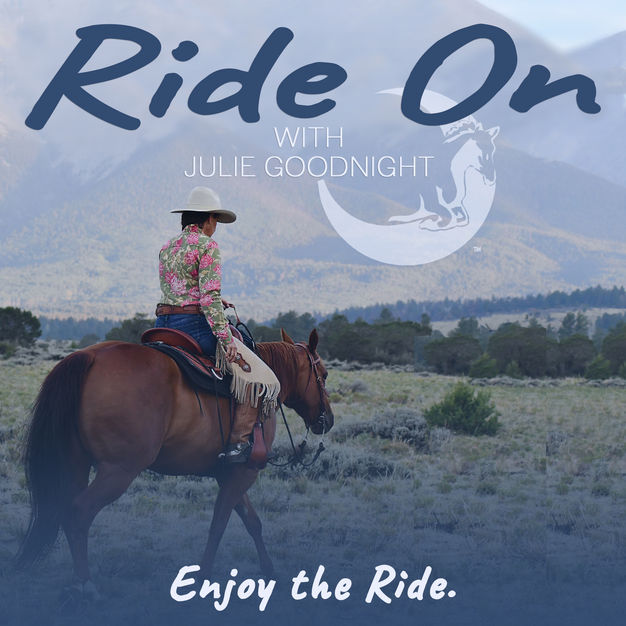 Ride On with Julie Goodnight
Ride On with Julie Goodnight
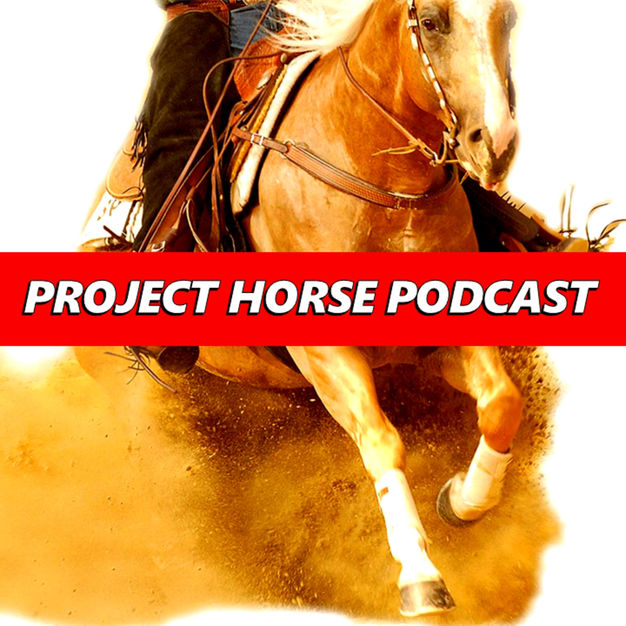 Project Horse Podcast
Project Horse Podcast
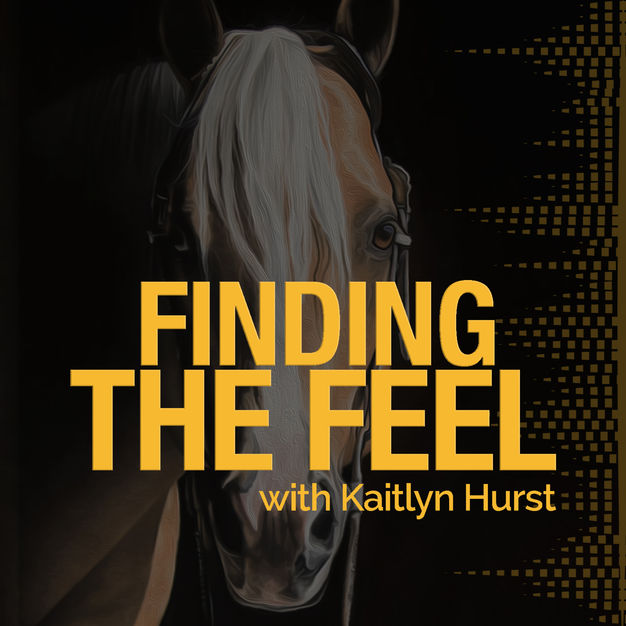 Finding The Feel
Finding The Feel
 Whoa Podcast About Horses Horsemanship
Whoa Podcast About Horses Horsemanship
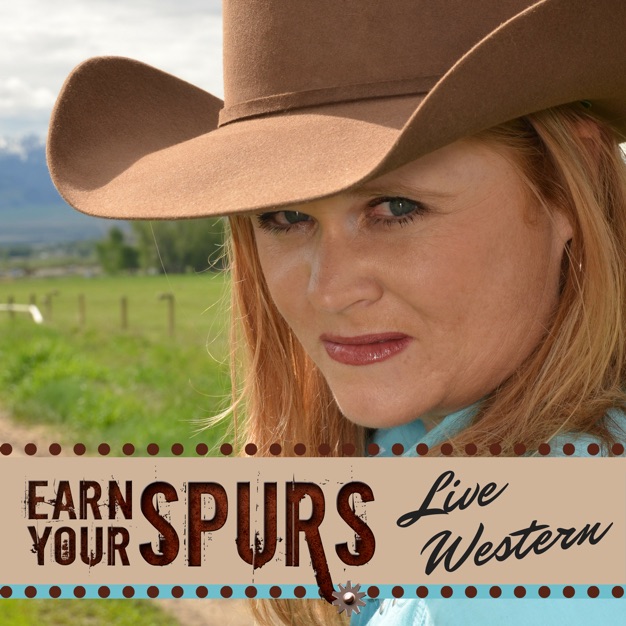 Earn Your Spurs: Exploring the Cowboy, Horses and All Things Western
Earn Your Spurs: Exploring the Cowboy, Horses and All Things Western